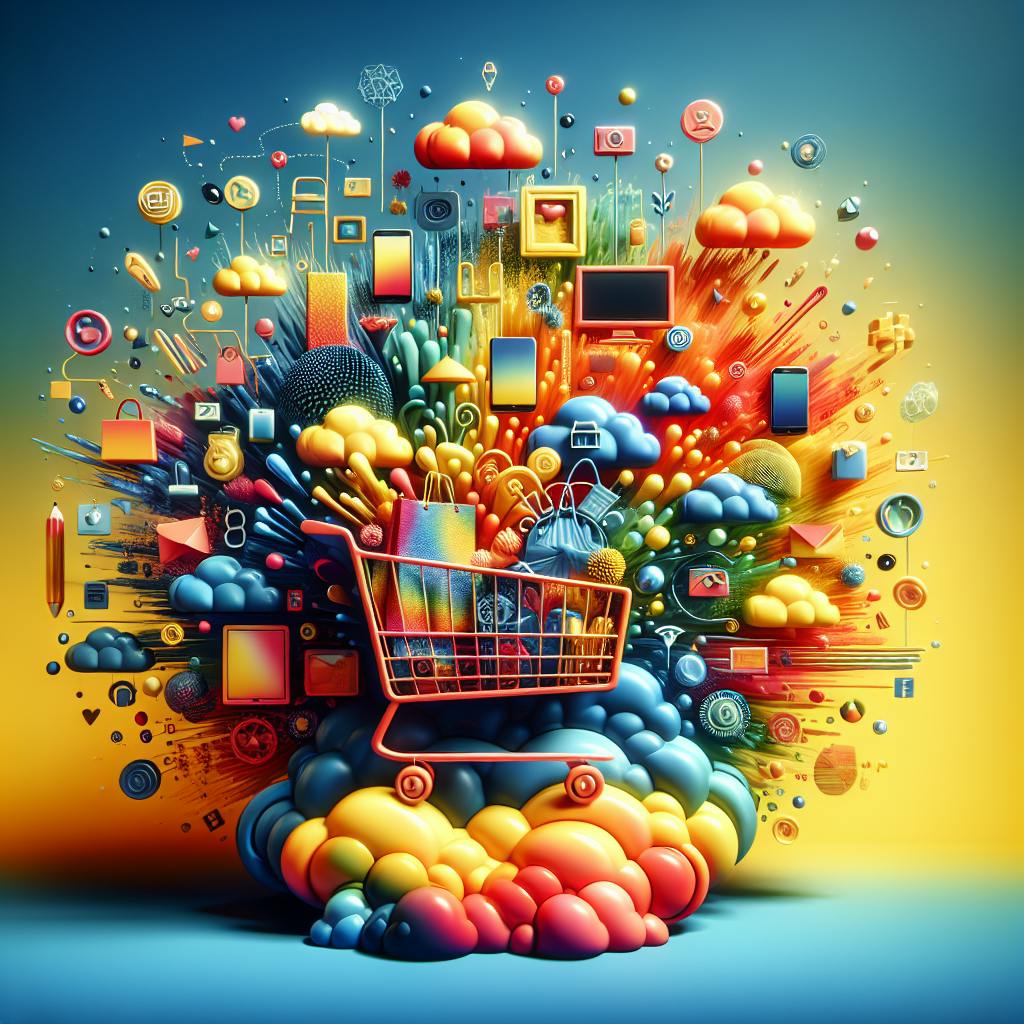Content personalization tailors online shopping experiences to individual customers. Here's what you need to know:
- Personalization can increase sales by up to 8% and order sizes by 12%
- 70% of customers spend more with companies offering personalized experiences
- Key challenges include data management, privacy concerns, and technical integration
How to improve content personalization:
- Gather and analyze customer data
- Use AI and machine learning tools
- Create personalized customer journeys
- Ensure consistency across devices
- Regularly measure and refine results
Common mistakes to avoid:
- Overdoing personalization
- Neglecting customer privacy
- Relying too heavily on automation
Real-world examples:
| Company | Strategy | Result |
|---|---|---|
| Amazon | Personalized recommendations | 35% of sales from recommendations |
| Netflix | Tailored content suggestions | 75% of viewership from recommendations |
By implementing smart personalization strategies, businesses can boost engagement, increase sales, and build customer loyalty.
1. Problems with Content Personalization
Content personalization sounds great, but it's not always easy to pull off. Let's look at the main issues online stores face when trying to tailor content for their customers.
1.1. Managing Data and Privacy
Personalization needs data, but handling it can be tricky:
- Data quality: Half of marketers say poor data quality is their biggest personalization hurdle.
- Data decay: About 2% of customer data goes bad each month. That means nearly 25% of your data could be outdated in a year.
- Privacy concerns: While 69% of consumers like personalization based on data they've shared, they're also worried about how their info is used.
1.2. Growing Personalization
As businesses expand, personalization gets harder:
- Data silos: Different departments often keep customer data separate, making it hard to get a full picture.
- Scaling challenges: What works for a small customer base might not work for millions.
1.3. Technical Setup Challenges
Adding personalization tools to existing systems isn't always smooth:
- Integration issues: Combining new personalization tech with old systems can be a headache.
- Skill gaps: Personalization needs a mix of talents - from data analysis to AI know-how.
1.4. Keeping Experience Consistent
Customers use multiple devices, and keeping things personal across all of them is tough:
- Cross-device tracking: Following a customer from their phone to their laptop isn't easy.
- Unified view: Creating a single customer profile from various data sources is a big challenge.
Despite these hurdles, personalization is worth the effort. As Shopify points out:
"A strategic approach to ecommerce personalization is key to ensuring your business stands out in the market."
The key is to start small, focus on data quality, and always keep your customers' privacy in mind.
2. Ways to Improve Content Personalization
To boost sales and engage users, online stores need to step up their personalization game. Here are practical ways to make it happen:
2.1. Know Your Customers
Start by gathering and analyzing customer data. This helps create detailed profiles and groups. Use:
- Purchase history
- Browsing behavior
- Demographic info
- Social interactions
With this data, you can segment customers and tailor their shopping experience.
2.2. Use AI and Machine Learning
AI-powered tools can process vast amounts of data quickly, offering:
- Real-time personalization
- Automatic product recommendations
- Predictive analytics
For example, AI can adjust content dynamically based on a user's browsing history and location, showing products that match their interests.
2.3. Create Personal Customer Journeys
Customize the entire shopping experience:
- Personalized product suggestions
- Tailored email campaigns
- Custom landing pages
Example: Ekster uses product quizzes to understand customer preferences. This leads to highly personalized product selections, improving the shopping experience.
2.4. Personalize Across Devices
Ensure a consistent experience whether customers shop on their phone, tablet, or computer. This means:
- Syncing customer data across platforms
- Adapting content for different screen sizes
- Remembering cart items and preferences
2.5. Check and Improve Results
Regularly measure the impact of your personalization efforts:
| Metric | What It Measures |
|---|---|
| Conversion rates | How often browsers become buyers |
| Average order value | How much customers spend |
| Customer satisfaction | How happy shoppers are with their experience |
Test different approaches and keep refining your strategy.
Real-world success: P.L.A.Y, a US pet lifestyle and accessory retailer, used PureClarity to power AI-driven personalization. They saw an increase in average order value of 13.7% and over 6.5% of their total online income is now generated from PureClarity recommenders.
3. Avoiding Common Mistakes
When it comes to content personalization, some common pitfalls can undermine your efforts. Here's how to sidestep these issues:
3.1. Don't Overdo Personalization
While personalization can boost engagement, going too far can backfire. Customers might feel uneasy if your messaging seems too familiar or intrusive.
Key point: Find the right balance between personalized and generic content.
| Personalization Level | Customer Reaction | Example |
|---|---|---|
| Too Little | Disengagement | Generic "Dear Customer" emails |
| Just Right | Engagement | Product recommendations based on past purchases |
| Too Much | Discomfort | Mentioning personal details not directly shared |
3.2. Protect Customer Privacy
Customers are increasingly aware of data privacy issues. Being open about how you use their information builds trust.
Tips for maintaining privacy:
- Clearly explain what data you collect and why
- Allow customers to opt out of data collection
- Regularly review and update your privacy policies
A 2022 Forrester report found that 64% of consumers are more likely to trust companies that minimize data collection. This highlights the importance of a thoughtful approach to data use.
3.3. Mix Automation with Human Input
While AI and automation can streamline personalization, human oversight remains crucial. This blend ensures your content stays relevant and emotionally resonant.
Ways to balance automation and human touch:
- Use AI for data analysis and basic personalization
- Have human teams review and refine AI-generated content
- Reserve complex, high-touch interactions for human staff
Stitch Fix, an online styling service, exemplifies this balance. They use algorithms to suggest clothing items but rely on human stylists for final selections and personal notes to customers.
4. Real Examples of Successful Personalization
4.1. Online Store Example
Amazon stands out as a leader in personalized shopping experiences. In 2015, the company was praised for offering the best-personalized experiences for customers. By 2016:
- 53% of customers felt Amazon had the best site experience overall
- 33% listed Amazon's site experience as the main reason for choosing them over other retailers
- Over 50% found Amazon's site research and product-filtering capabilities superior
Amazon's "My-Mix" feature lets customers create a personalized shopping feed, saving items they want or are considering. This approach to personalization has contributed to Amazon's continued growth, with sales increasing from $469.8 billion in 2021 to $514.0 billion in 2022, a 9% year-over-year increase.
4.2. Content Publisher Example
Netflix has mastered content personalization through its email marketing strategy. The streaming giant tailors its emails based on a user's viewing history, sending targeted suggestions for movies and shows. This approach keeps subscribers engaged and encourages them to spend more time on the platform.
Netflix's personalization efforts extend beyond email. Their recommendation system analyzes viewing patterns to suggest content on the home screen, making it easier for users to find shows they'll enjoy. This strategy has helped Netflix maintain its position as a leading streaming service, with over 230 million paid memberships globally as of 2023.
| Personalization Strategy | Results |
|---|---|
| Tailored email recommendations | Higher engagement rates |
| Personalized home screen content | Increased viewing time |
| Viewing history-based suggestions | Improved user retention |
5. Wrap-up
Content personalization has become a key factor in engaging users and boosting sales. As we've seen, businesses that implement effective personalization strategies can see substantial benefits:
- Increased sales: Marketers report an average 20% increase in sales when using personalized experiences.
- Higher engagement: Personalized email campaigns deliver 6 times higher transaction rates.
- Improved customer loyalty: 60% of consumers are likely to become repeat buyers after a personalized shopping experience.
To make the most of content personalization:
- Collect and analyze data: Use customer data to create detailed profiles and segments.
- Leverage AI and machine learning: Implement tools like PureClarity's AI-driven product recommendations to enhance the shopping experience.
- Focus on omnichannel personalization: Tailor content across various platforms and devices, as demonstrated by Nike HK's success in improving customer interactions.
- Respect privacy: Allow customers to opt-in for data collection and personalization, building trust and complying with data privacy laws.
Looking ahead, the future of content personalization will likely involve:
| Trend | Description |
|---|---|
| Hyper-personalization | Using AI and big data to tailor experiences based on individual preferences and behaviors |
| Contextual personalization | Delivering relevant interactions based on a user's specific situation, including location and device type |
| IoT integration | Leveraging data from connected devices to create highly personalized experiences |
| AR/VR technologies | Redefining personalized experiences in shopping, healthcare, and social interactions |
FAQs
How does personalization increase sales?
Personalization boosts sales by:
- Improving customer experience: Tailored content makes shoppers feel understood, leading to higher engagement.
- Increasing relevance: Personalized product recommendations help customers find what they need faster.
- Driving loyalty: Customized experiences encourage repeat purchases.
For example, Amazon attributes 35% of its sales to personalized product recommendations. Their approach of suggesting items based on viewing history ("If you viewed this Dell laptop, you might also like...") has proven highly effective.
How to write personalized content?
To create personalized content:
- Collect data: Gather information on user behavior, preferences, and demographics.
- Segment audience: Group users with similar traits or behaviors.
- Choose format: Decide on the content type (e.g., email, product page).
- Craft content: Develop targeted messages for each segment.
- Test and refine: Continuously improve based on performance metrics.
Netflix exemplifies this process by using machine learning to segment customers and recommend shows based on viewing behavior, contributing to 75% of its viewership.
What are personalized product recommendations?
Personalized product recommendations are unique suggestions tailored to individual visitors based on their behavior and profile. They typically use machine learning algorithms to analyze user data and predict preferences.
Examples of effective personalized recommendations:
| Company | Strategy | Result |
|---|---|---|
| Cora Romania | Used loyalty card data for unique promotions | 7,500 additional weekly store visits |
| Orlebar Brown | Added recommendations to cart abandonment emails | 6.59% sales increase |
| Rip Curl | Implemented personalized home page recommendations | 1.8% sales uplift |
These examples show how personalization can boost engagement and sales across different retail sectors.




